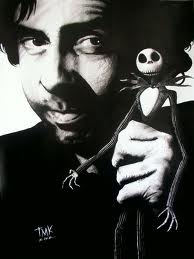A Joke About Your Mind’s Eye
Here’s a cute little joke:
The receptionist at the doctor’s office goes running down the hallway and says, “Doctor, Doctor, there’s an invisible man in the waiting room.” The Doctor considers this information for a moment, pauses, and then says, “Tell him I can’t see him”.
It’s a cute play on a situation we’ve all faced at one time or another. We need to see a doctor but we don’t have an appointment and the doc just has no time to see us. We know how it feels. That’s part of the reason the joke is funny.
Now let’s talk about the movie playing in your head. Whenever we hear or read a story, we create a little movie in our heads to illustrate it. This is one of the reasons I like to read novels — I get to invent the pictures. I “know” what the scene should look like. When I read a line of dialogue, I imagine how the character would “sell” the line. The novel’s descriptions stimulate my internal movie-making machinery. (I often wonder what the interior movies of movie directors look like. Do Tim Burton’s internal movies look like his external movies? Wow.)
We create our internal movies without much thought. They’re good examples of our System 1 at work. The pictures arise based on our experiences and habits. We don’t inspect them for accuracy — that would be a System 2 task. (For more on our two thinking systems, click here). Though we don’t think much about the pictures, we may take action on them. If our pictures are inaccurate, our decisions are likely to be erroneous. Our internal movies could get us in trouble.
Consider the joke … and be honest. In the movie in your head, did you see the receptionist as a woman and the doctor as a man? Now go back and re-read the joke. I was careful not to give any gender clues. If you saw the receptionist as a woman and the doctor as a man (or vice-versa), it’s because of what you believe, not because of what I said. You’re reading into the situation and your interpretation may just be erroneous. Yet again, your System 1 is leading you astray.
What does this have to do with business? I’m convinced that many of our disagreements and misunderstandings in the business world stem from our pictures. Your pictures are different from mine. Diversity in an organization promotes innovation. But it also promotes what we might call “differential picture syndrome”.
So what to do? Simple. Ask people about the pictures in their heads. When you hear the term strategic reorganization, what pictures do you see in your mind’s eye? When you hear team-building exercise, what movie plays in your head? It’s a fairly simple and effective way to understand our conceptual differences and find common definitions for the terms we use. It’s simple. Just go to the movies together.
Strategy: Who’s Number 2?
The CEO is clearly the most important executive when it comes to creating and implementing organizational strategy. Who’s the second most important executive for strategy?
The standard answer is probably the Chief Operation Officer — especially in terms of carrying out the strategy. But I’m starting to think that the COO is only the third or fourth most important strategic officer. So, who’s number 2? I’m leaning towards the head of Human Resources. Let’s call him or her the Chief Human Resources Officer or CHRO.
I’m leaning toward the CHRO because I’ve always believed that the soft stuff is hard. It’s not easy to get your culture right or to motivate employees for the long haul. It is all too easy to get your strategy crosswise with your culture. As I’ve noted before , when it’s culture versus strategy, culture always wins.
Similarly, I’ve never seen a company falter because they couldn’t find enough “numbers guys”. Our B-schools just keep churning them out. On the other hand, I have seen companies falter because they couldn’t find good communicators and motivators. Understanding human behavior is much more difficult than understanding the numbers. While we can teach people the “soft arts,” it doesn’t seem to be a popular specialty at university.
What’s really pushing me toward the CHRO as strategy leader is Scott Keller and Colin Price’s book, Beyond Performance: How Great Organizations Build Ultimate Competitive Advantage. (Click here for the book or here for a white paper). Keller and Price argue that too many companies pay close attention to performance (“the numbers”) but not nearly enough attention to organizational health. Their “…central message is that focusing on organizational health — the ability of your organization to align, execute, and renew itself faster than the competition — is just as important as focusing on the traditional drivers of business performance.” This has everything to do with the “people-oriented aspects of leading an organization.” In my mind, that means the CHRO better be intimately involved.
Keller and Price present a lot of statistical evidence to buttress their case. (They are McKinsey guys, after all). There is a distinct correlation between organizational health and organizational performance. They also present five “frames” for viewing both health and performance during transformation change: 1) Aspire; 2) Assess; 3) Architect; 4) Act; 5) Advance. I’ll write more about these in the future but the bottom line is that you need to use these frames to view both performance and health to develop a sustainable, high performance organization.
While I think the CRHO could and should be a strategy leader, in my experience, it doesn’t happen very often. I’ve seen HR organizations launch very interesting programs but, too often, the programs exist in their own right rather than as strategic enablers. They don’t impede the strategy but they don’t help it either. I also see the numbers guys set the strategy and then turn to the CHRO and say, in effect, “OK, here’s the strategy, now get us the people we need.” (In technology, this happens to CIOs all the time). To be effective, the CHRO really needs to be at the strategy table.
Why wouldn’t the CHRO be invited to the strategy table? Perhaps because they understand the soft stuff but not the business. I’ve seen CHROs (and CIOs) make naive comments in strategy meetings, showing that they clearly don’t understand the business. The result is a bunch of numbers guys rolling their eyeballs and looking vaguely embarrassed. Numbers guys need to learn more about the soft stuff. By the same token, CHROs (and their staffs) need to learn more about the performance side of the business. Perhaps then, they can truly become strategy leaders.
Better Communication Through Plumbing
Want to improve communication in your organization? Reduce the number of bathrooms. Everybody needs to use the bathroom from time to time. With fewer bathrooms to choose from, people are more likely to bump into each other. When they do, they wind up communicating.
One of your goals is to get people to bump into each other (more or less literally) as often as possible. It’s particularly important to get people from different disciplines to mix and mingle. When they do, sparks of creativity start to fly. You can design (or re-design) your space to ensure that this happens. Instead of having a coffee pot in every corner of the building, have only one coffee service centrally located. Coffee is a people magnet. Be sure to have some tables nearby so people will have a place to chat while consuming their caffeine.
You can also randomize your offices. Instead of having engineers sit only with engineers and marketers sit only with marketers, mix them up a bit. Ensure that people from different disciplines get to know each other. It sparks new ideas and reduces the us-versus-them mentality.
What else can you do? Well, maybe you should encourage your employees to take up smoking. Watch the video to find out why.




